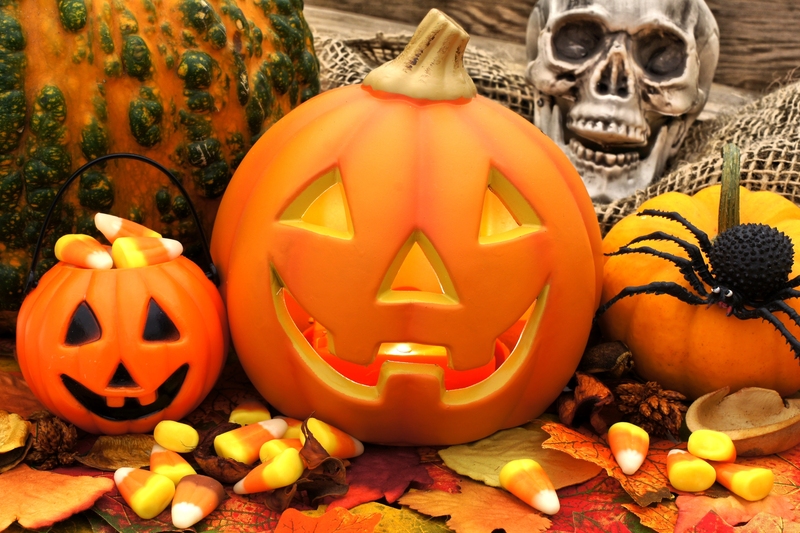Explore the Profound Significance of Your Birth Flower
Posted on 22/08/2025
Explore the Profound Significance of Your Birth Flower
Flowers have decorated celebrations, marked milestones, and carried secret messages through history. But did you know that each month has its own symbolic flower, known as a birth flower? Your birth flower isn't just a pretty bloom--it holds meaning, personality traits, and stories as unique as you are. In this comprehensive guide, we'll explore the profound significance of your birth flower, delving into what it reveals about you and how you can embrace its symbolism in your daily life.

What Is a Birth Flower? Origins and History
The tradition of associating flowers with birth months dates back to ancient Rome, where offerings of specific blossoms celebrated a person's birth. Over time, various cultures have attributed special meanings to birth flowers, weaving them into folklore, art, and customs. While lists have evolved, the modern chart of birth flowers is widely recognized and cherished today.
- Birth flowers are chosen based on seasonal blooms and historic symbolism.
- Like birthstones, they are used to represent personality, luck, and unique qualities.
- Many believe that keeping or gifting your birth month flower brings positive energy and personal insight.
How Are Birth Flowers Selected?
The list of birth flowers by month reflects a combination of seasonal availability and cultural symbolism, with many flowers chosen for their special associations. Florists and historians have solidified a generally accepted list, but there can be regional variations. These blooms serve as a botanical signature for each zodiac and calendar month.
The Complete Guide to Birth Flowers: Month by Month
Let's explore the meaning, background, and personality insights tied to each birth flower.
January: Carnation & Snowdrop
- Carnation: Resilience, unconditional love, admiration.
- Snowdrop: Hope, purity, rebirth.
Carnations, with their ruffled petals and array of colors, are a symbol of steadfast love and the strength to endure tough winters. Snowdrops hint at new beginnings as they bloom through the frost, making January birthdays a celebration of hope and perseverance.
February: Violet & Primrose
- Violet: Faithfulness, modesty, spiritual wisdom.
- Primrose: Young love, nurturing, new adventures.
The purple-hued violet is the classic birth month flower for February, symbolizing loyalty and quiet strength. The primrose captures youthful emotion and new experiences, perfect for those born in the season of love.
March: Daffodil & Jonquil
- Daffodil: Rebirth, optimism, joy.
- Jonquil: Affection, desire, sympathy.
March's birth flowers, the daffodil and jonquil, herald the arrival of spring. These cheerful blooms are a sign of hope and new beginnings, reflecting the optimism that comes with each March birthday.
April: Daisy & Sweet Pea
- Daisy: Innocence, purity, loyal love.
- Sweet Pea: Blissful pleasure, gratitude, departure.
Daisies symbolize a childlike joy and the promise of new adventures. Sweet peas, with their delicate fragrance, evoke Thank You's and fond farewells, making them ideal for April-born individuals who cherish sincerity and lasting bonds.
May: Lily of the Valley & Hawthorn
- Lily of the Valley: Humility, sweetness, return of happiness.
- Hawthorn: Hope, supreme happiness, protection.
Delicate but resilient, the Lily of the Valley represents the return of joy and the humility of May-born souls. The hawthorn blossom brings protection and hope, embodying the warm and nurturing spirit of this month.
June: Rose & Honeysuckle
- Rose: Love, honor, passion, beauty.
- Honeysuckle: Devotion, happiness, sweet disposition.
From timeless romance to gratitude and friendship, the rose is a symbolically rich birth flower for June. Honeysuckle brings sweetness and unwavering loyalty to those born under the midsummer sun.
July: Larkspur & Water Lily
- Larkspur: Positivity, open heart, lightness.
- Water Lily: Purity, enlightenment, creative spirit.
July birth flowers bloom with meaning--larkspur carries light-heartedness and affection, while the serene water lily hints at a creative and spiritual depth.
August: Gladiolus & Poppy
- Gladiolus: Integrity, strength, infatuation.
- Poppy: Imagination, peace, eternal sleep.
The tall, vibrant gladiolus signifies determination and moral strength for August-born individuals. Poppies evoke imagination, remembrance, and restful dreams, offering a thoughtful balance to the vibrant late-summer personality.
September: Aster & Morning Glory
- Aster: Wisdom, faith, valor.
- Morning Glory: Affection, unrequited love, mortality.
As summer transitions to fall, asters burst with vibrant color--symbolizing wisdom, elegance, and courage. Morning glories, with their ephemeral beauty, remind us of fleeting moments and heartfelt affection.
October: Marigold & Cosmos
- Marigold: Passion, creativity, warmth.
- Cosmos: Order, harmony, peace.
October's gold and orange blooms, the marigolds, reflect creativity and spirited energy. Cosmos adds a touch of peaceful charm, highlighting the harmonious balance October birthdays bring to the world.
November: Chrysanthemum
- Chrysanthemum: Friendship, honesty, joy.
Beloved in many cultures, chrysanthemums bloom late in the year and are symbols of happiness, loyalty, and longevity. November-born individuals with this birth flower are often genuine, supportive, and positive.
December: Narcissus & Holly
- Narcissus (Paperwhite): Hope, respect, rebirth.
- Holly: Defense, domestic happiness, festive spirit.
Narcissus and holly embody the optimism and protective energy of winter's start. December birthdays carry a festive, resilient spirit and a knack for bringing light during darker times.
Unlocking the Profound Significance of Your Birth Flower
Each birth flower meaning is more than a seasonal marker. These blooms can:
- Reflect your personality traits or emotional tendencies
- Offer inspiration and encouragement for your life's journey
- Serve as protective symbols or personal emblems
- Enhance celebrations and rituals with deeper meaning
For example, if you're born in March and your daffodil birth flower represents rebirth, you might find comfort and motivation in new starts and personal growth. Or, as an August poppy, you may feel inspired by themes of peace, remembrance, and rich imagination.
How to Incorporate Your Birth Flower into Your Life
Want to embrace the symbolic power of your birth month flower? Here are creative ways to let your floral sign shine:
- Jewelry and Accessories: Wear birth flower jewelry--a pendant, charm, or bracelet--as a beautiful daily reminder of your unique strengths.
- Home Decor: Display fresh arrangements or botanical prints of your flower at home for positivity and inspiration.
- Gardening: Plant your birth flower in your garden or on a balcony; connect with its cycles for personal insight.
- Tattoos and Art: Immortalize your birth flower meaning with a subtle tattoo, personalized art, or even as part of your stationery.
- Meditation and Ritual: Use visualizations or rituals involving your flower to focus on its traits, setting intentions for the year.
Global and Cultural Perspectives on Birth Flowers
The significance of birth flowers is recognized in many cultures:
- In Japan, the language of flowers (Hanakotoba) attaches emotional nuance to each bloom.
- In Victorian England, floriography (sending coded messages through flowers) became an art form.
- Native American and Celtic traditions also assign spiritual meaning to native plants and blossoms.
These global connections enrich the profound birth flower symbolism you inherit with your birthday, linking you to centuries of tradition and wisdom.

Birth Flower FAQs--Everything You Need to Know
What if I don't like my birth flower?
No worries! Many months have alternate flowers, and you can always look to the meaning rather than the specific bloom. It's about finding personal resonance and inspiration.
Is it good luck to get your birth flower as a gift?
Yes! Throughout history, receiving your birth flower has been seen as a symbol of luck, blessings, and personal affirmation. It's a thoughtful, meaningful gift for any occasion.
Do birth flowers relate to zodiac signs?
Often, yes--there's overlap between astrology and birth month flower meanings. Many people use both systems to deepen self-discovery and personal affirmation.
Discover the Deeper Meaning: Why Your Birth Flower Matters
Why do birth flowers resonate so strongly with people? Because they're living, beautiful reminders of the unique story you carry. From the delicate snowdrop to the vivid marigold, each flower is a symbol of resilience, hope, and growth.
- Personalized Symbolism: Your birth flower is yours alone--a marker of your strengths, challenges, and journey.
- Tradition & Heritage: Embracing your birth bloom connects you with ancient practices and timeless wisdom.
- Mindful Affirmation: Calling on your flower's qualities can inspire confidence and gratitude in daily life.
Closing Thoughts: Embrace the Magic of Your Birth Month Bloom
Whether you're a passionate marigold, a resilient carnation, or a soulful violet, exploring the profound significance of your birth flower unlocks self-understanding, celebration, and connection to the natural world. Next time you see your birth bloom--or gift it to someone special--remember: you're honoring a legacy of beauty, symbolism, and personal growth that's been cherished for generations.
Explore your birth flower's meaning, and let its message bring light, inspiration, and color to every chapter of your life.
Latest Posts
Peony Color Meanings: A Deep Dive into Flower Symbolism
Explore the Profound Significance of Your Birth Flower
Decoding the Significance of Red Roses in Romance
Experience the Mood-Enhancing Benefits of Flowers for Well-Being





